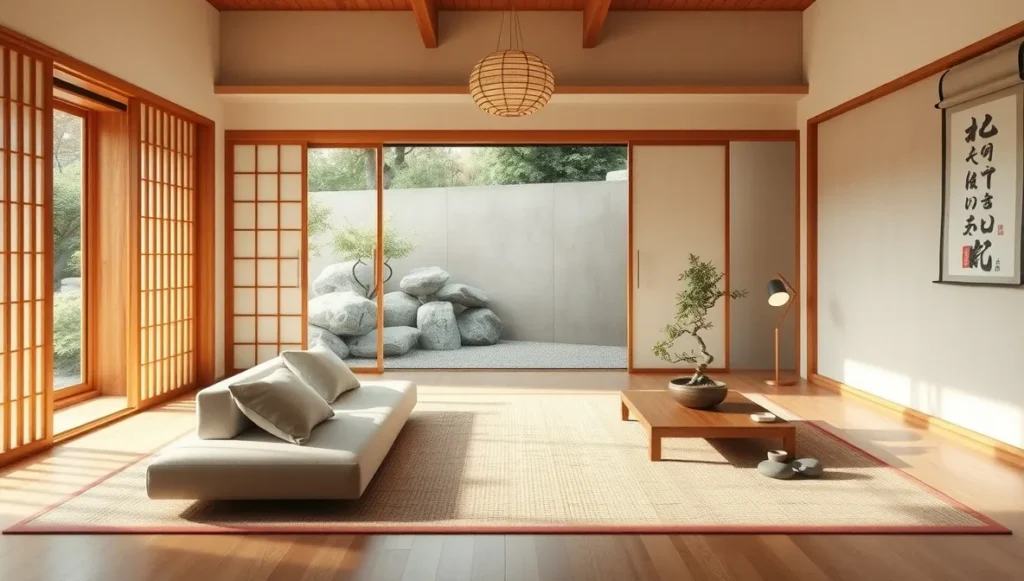- Wabi-Sabi Interior Design: The Japanese Way of Finding Beauty in Imperfection - September 6, 2025
- Japanese Zen Interior Design: Why Less Really Is More - September 4, 2025
- Modern French Interior Design: Why Everyone’s Falling in Love (And How to Bring It Home) - September 3, 2025
Table of Contents
“Maria, I can’t breathe in my own apartment anymore.” That’s what Sarah told me last spring. Her Manhattan place looked like a magazine spread, but she felt anxious every time she walked through the door. Fast forward six months – same apartment, completely different energy. What changed? We stripped away 70% of her stuff and let the space breathe again.
I’ve been doing this work for over a decade now, and here’s what I’ve learned: most people think Zen design means white walls and empty rooms. That’s not it at all. Real Zen design is about creating spaces that make you feel grounded the moment you step inside.
What Zen Design Actually Means
Zen comes from Japanese Buddhist traditions where every single thing in a space has purpose. There’s no random decoration just sitting around looking pretty. When I studied with traditional designers in Kyoto, they taught me three core ideas that changed everything:
- Kanso (simplicity) – but warm simplicity, not cold minimalism
- Shizen (naturalness) – materials that age beautifully over time
- Shibui (understated beauty) – things that get more beautiful the longer you live with them
The biggest difference between Zen and regular minimalism? Zen feels like a warm hug. Minimalism can feel like sleeping in a hotel room.
Getting the Basics Right
Give Your Rooms Room to Breathe Space itself is an design element in Japanese culture. They call it “ma” – the purposeful emptiness between things. When I walk into most American homes, every surface is covered with something. Try this: pick one room and remove half the items for a week. I guarantee you’ll feel calmer.
Colors That Actually Calm You Down Forget stark white walls. Think warm stone gray, the color of driftwood, creamy whites that change with the light throughout the day. I painted my own living room in what I call “morning fog gray” – it looks different at sunrise than at sunset, and guests always comment on how peaceful it feels.
When you want some color, go subtle. Deep forest green in a single throw pillow. Ocean blue in one ceramic vase. The rule I follow: if a color makes you stop and stare at it, it’s probably too bold.
Materials Matter More Than You Think Real wood beats fake wood every single time. Stone beats plastic. Cotton beats polyester. Your body knows the difference even when your brain doesn’t. I have clients who swear their stress levels dropped just from switching to natural fiber rugs and wooden furniture.
Light Changes Everything Big windows with minimal covering during the day. Warm, soft lighting at night – never overhead fluorescents. Paper lamps, wooden fixtures, candles when you want to really unwind. Harsh lighting makes peaceful impossible.
I came across this Zen-inspired living room in Kyoto that sums up everything I love about Zen design – open space, subtle colors, natural materials, and quiet balance. The photo below captures that peaceful simplicity perfectly.

Room by Room Breakdown
Living Rooms That Actually Help You Relax
Low furniture works better than high furniture for conversation and relaxation. Floor seating with good back support beats formal sofas every time. Instead of centering everything around a TV, try centering around a low wooden table where people can actually see each other.
Storage is huge here – built-ins with doors that close completely. Display three meaningful objects maximum. I have one client who displays exactly one beautiful bowl on her coffee table. That’s it. People always ask about it.
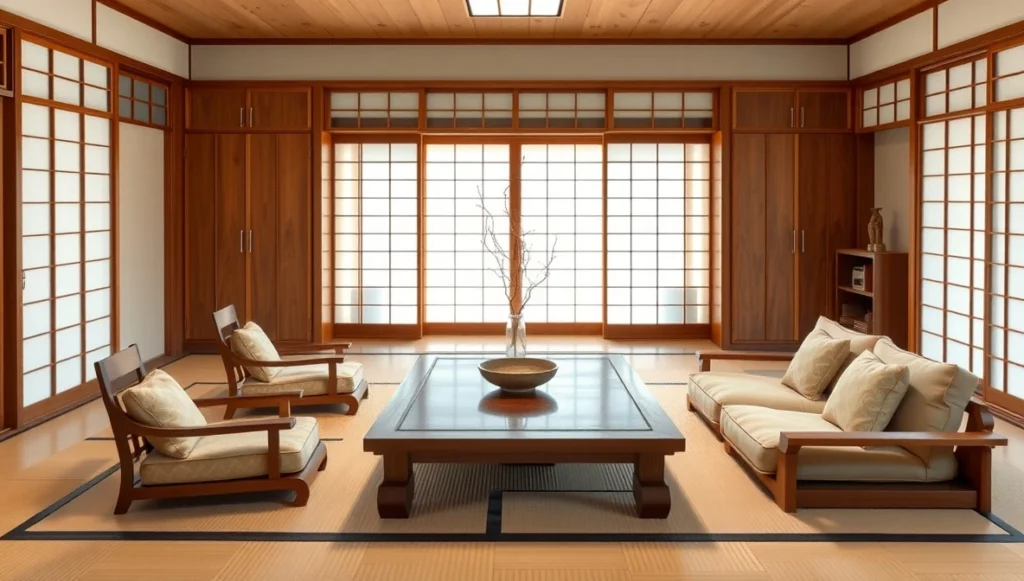
Bedrooms for Better Sleep
Platform beds close to the ground create this grounded feeling that helps with sleep. Simple wooden headboard or just the wall itself. Keep surfaces clear – nightstand should have a lamp, maybe one book, nothing else.
One corner with a floor cushion for morning coffee or evening reading makes the biggest difference. Doesn’t need to be fancy – just one spot that’s completely yours.
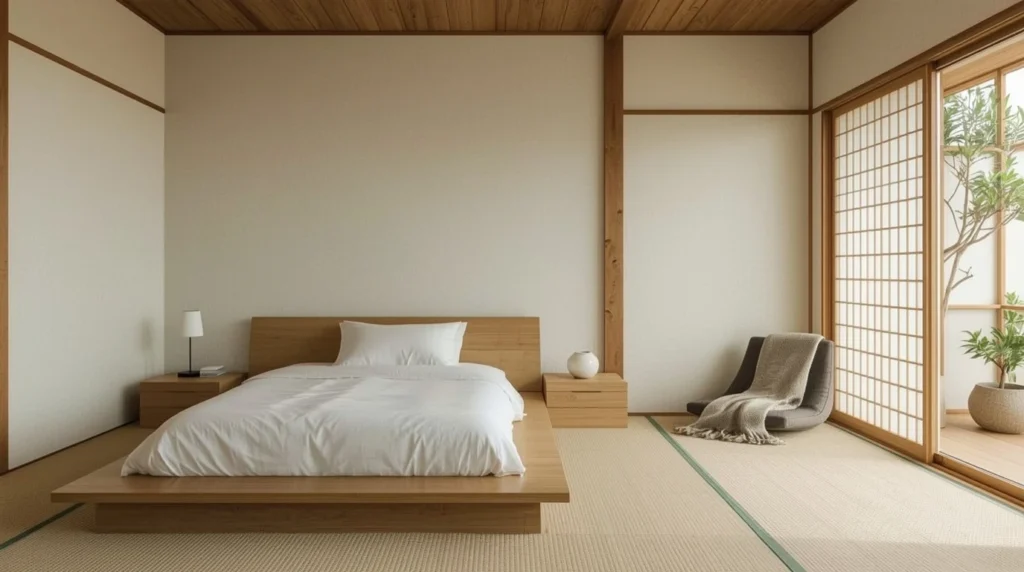
Kitchens Without Chaos
Clear counters change everything about cooking and eating. If you use it daily, fine. Everything else goes in drawers or cabinets.
Wood cutting boards, ceramic bowls, glass storage jars – they look better and feel better than plastic everything. Fresh herbs in simple clay pots by the window bring life into the space while being actually useful.

Bathrooms That Feel Like Spas
River rocks around the tub or shower floor feel amazing on bare feet. Wooden bath caddy, bamboo towels, ceramic soap dispensers instead of plastic bottles.
One plant that loves humidity – snake plants or orchids work great. The sound of a small water feature masks all that plumbing noise and makes baths feel more luxurious.
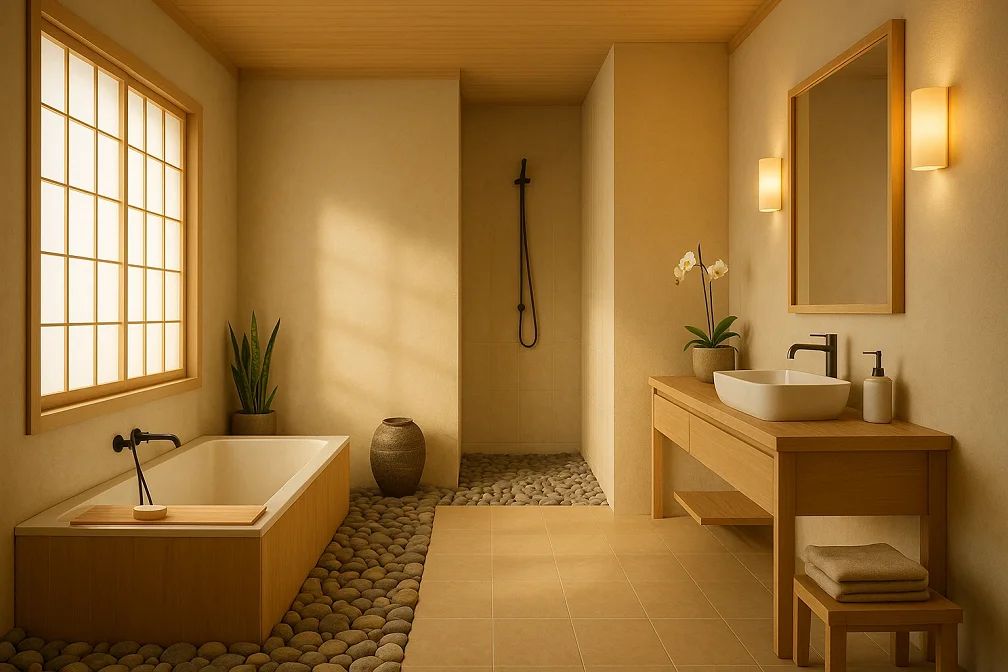
Home Offices That Don’t Stress You Out
Simple wooden desk, chair that supports your back well, one small meaningful object. Everything else hidden in drawers. Natural light from the side, never behind your screen.
Having trouble focusing? Try a tiny zen garden you can rake with your fingers during thinking breaks. Sounds weird, works amazingly well.
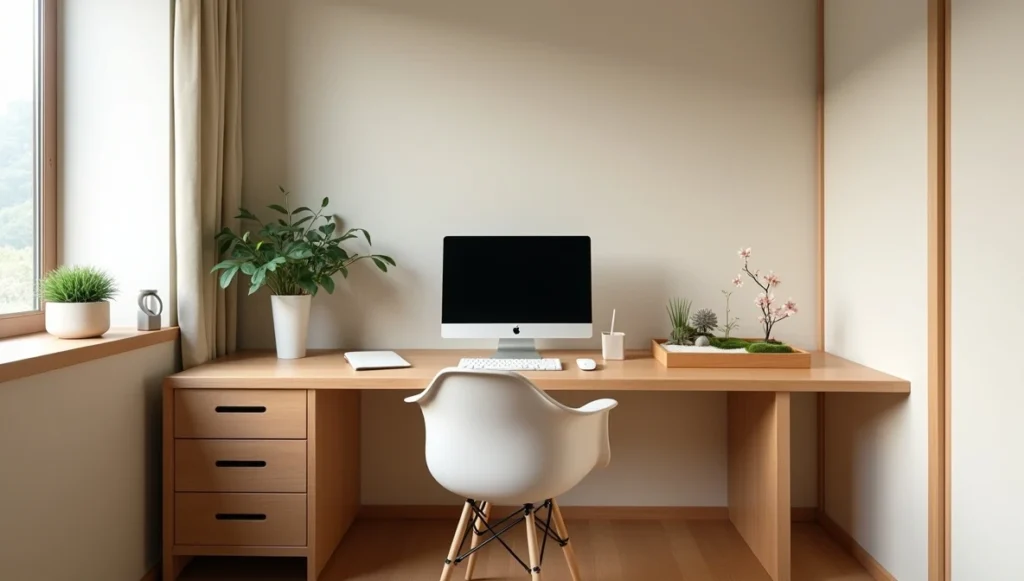
Entryways That Transition Your Mood
Shoe storage that encourages taking shoes off helps separate outside stress from home calm. Simple wooden bench, maybe a small mirror, one plant or piece of natural art.
Essential oil diffuser or small water fountain signals your nervous system that you’re transitioning from work mode to home mode.
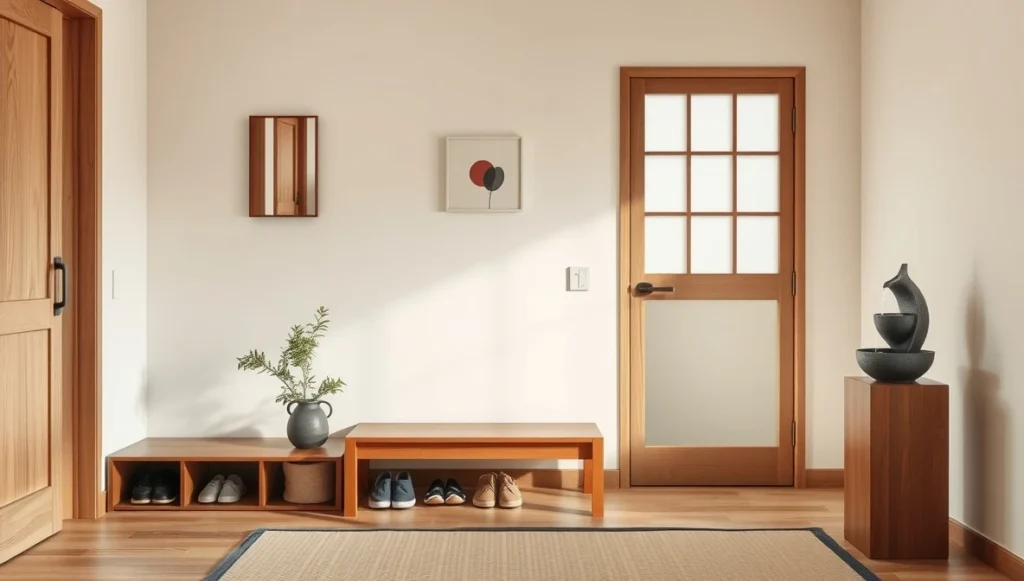
Mistakes Everyone Makes
Going too sterile. Empty isn’t automatically peaceful. You need warmth through natural materials and a few meaningful objects.
Buying everything “zen-themed” at once. Random Buddha statues and wind chimes everywhere just creates more visual noise.
Copying someone else’s exact setup. Your peaceful space needs to reflect your actual life and personality.
Start Simple, Build Slowly
Don’t renovate everything at once. Pick one room, remove things that don’t serve a purpose, add one natural element like a plant or wooden bowl. Live with it for two weeks. Then make the next small change.
The transformation happens gradually, and that’s actually better than dramatic overnight changes. You learn what really makes you feel peaceful versus what just looks good in photos.
Why This Actually Works
I’ve watched hundreds of clients go through this process. The ones who stick with it don’t just get prettier homes – they sleep better, stress less, and spend more time actually enjoying their space instead of maintaining it.
Zen design isn’t about following rules perfectly. It’s about creating spaces that support the life you actually want to live. Less stuff, more peace. Natural materials, better energy. Simple choices, profound results.
